In this update:
1. Hydraulic Press
2. Bridgeport Mill
3. CNC Plasma Table
4. Builder Reports
Before we get started, just a few thoughts on where Prowler Aviation is today and where we hope to go in the future. In this update we will cover several facets of building our capability to manufacture parts for constructing our first Prowler. Our plan is to develop and use these processes to make most of the parts for our first company aircraft. By going through the aircraft one subkit at a time, we will eventually have the capability to produce most of the airframe.
Once that is complete, we will have the knowledge necessary to make the aircraft in (at least) one manner. From there we will be able to consider larger scale production and how we want to accomplish that. There will be many options and we will consider as many as possible to come up with a practical, economical, scalable and reliable way to produce airframes.
We plan to put one of George's engine designs onto our aircraft, but we currently do not plan to offer the engine for sale with the kit. We've decided to limit our scope (at least initially) to producing the airframe and save the firewall forward for later. We will also have (for the first time ever) complete, accurate and thorough documentation of the aircraft. This documentation will include a shop manual (how to build each subkit), the builder's manual system (how to assemble the subkits into an aircraft), a complete parts list spreadsheet, a virtual computer model of the Prowler, and a business plan.
That's the long term plan. If you've been keeping tabs on us in this blog, you'll see that we've made significant progress on several of these areas. Most of this update will discuss progress on the manufacturing of parts. Last summer we completed the "big sort" and did much of the parts list work. Modeling of the airplane's parts will happen as we make the parts for our airplane. The CNC plasma system is almost ready - as you'll see later in the update. The builders manual system will also be accomplished as we build the airplane, subkit by subkit. Two of the subkits shop manual parts have been completed and the rest will be done as the plane progresses. The business plan will be the last task to be accomplished.
Our airplane currently has most of the wing spar parts (center and outboard) made. The spar is currently waiting on the cutting of a few parts with the CNC plasma system. We have the vert stab subkit built. The current goal is to make up the horizontal stab subkit, get the needed wing spar parts made, get the wing spar installed to the wing jig and press out the wing ribs by the end of the year.
So, there it is. We hope this helps to outline where we are here at Prowler Aviation. On to the update.
1. Hydraulic Press - To reach the goal of getting wing ribs pressed out by fall - a press would be helpful. So, this past two weeks we fabricated the hydraulic pump unit and installed it onto the press. The hydraulic ram had been refurb'ed previously and the pump unit was hooked up to it. We added a 40 amp 220volt circuit and a motor controller and presto - hydraulic press. Here's the pic:

 The hydraulic pump is only good for 1500psi. However, the piston in the ram is 5 inches in diameter and that gives an area of approximately 19.6 square inches. This gives almost 30,000 lbs of pressure from the ram. Spread that force out over an average part area of 300 square inches and it figures out to about 100psi. Should be more than sufficient to fold up some 0.040" type O aluminum. Next comes the learning curve associated with actually pressing out parts. In particular, keeping the male and female dies lined up with the flat blank that will become the part as the press does its thing. More to follow.
The hydraulic pump is only good for 1500psi. However, the piston in the ram is 5 inches in diameter and that gives an area of approximately 19.6 square inches. This gives almost 30,000 lbs of pressure from the ram. Spread that force out over an average part area of 300 square inches and it figures out to about 100psi. Should be more than sufficient to fold up some 0.040" type O aluminum. Next comes the learning curve associated with actually pressing out parts. In particular, keeping the male and female dies lined up with the flat blank that will become the part as the press does its thing. More to follow.2. Bridgeport Mill - It took a while to get the mill cleaned up and order some parts needed to fix up the mill a bit. The most interesting was replacing some head bolts. One was broken and one was beat up a bit. The change was fun:


 We got the mill moved into position, hooked up with 3 phase power and have even used it already to machine some slotted holes into some brackets for the CNC table. The 3 phase power comes from a rotary phase converter. We purchased a phase converter panel from Wyn Phase Converter and Supply (http://www.wnysupply.com/index.cfm) and scavenged a 3hp idler motor out of an old air handling unit from the local industrial surplus place.
We got the mill moved into position, hooked up with 3 phase power and have even used it already to machine some slotted holes into some brackets for the CNC table. The 3 phase power comes from a rotary phase converter. We purchased a phase converter panel from Wyn Phase Converter and Supply (http://www.wnysupply.com/index.cfm) and scavenged a 3hp idler motor out of an old air handling unit from the local industrial surplus place.  We had a little problem with the delivery of the phase converter panel. Apparently some components shook loose during shipping and managed to beat-up the rest of the components in the panel along the way. Here's what it looked like at delivery:
We had a little problem with the delivery of the phase converter panel. Apparently some components shook loose during shipping and managed to beat-up the rest of the components in the panel along the way. Here's what it looked like at delivery:  Not wanting to wait the time that would be necessary to return it and wait for a new delivery, we set out to put the pieces back together. With the help of screws, glues and bailing wire we got it put back together and installed. It turned out well. Total cost for the phase converter was ~ $200. Here's a shot of the final rotary phase converter install:
Not wanting to wait the time that would be necessary to return it and wait for a new delivery, we set out to put the pieces back together. With the help of screws, glues and bailing wire we got it put back together and installed. It turned out well. Total cost for the phase converter was ~ $200. Here's a shot of the final rotary phase converter install:  Here's the mill pretty much ready to go:
Here's the mill pretty much ready to go: 
3. CNC Plasma Table - This project has been a long time in the works, but it will hopefully be the centerpiece in being able to practically and efficiently cut parts for the airplane. We've determined that upwards of 80-90% of the parts for the airframe are made from flat pieces of raw stock. After a bunch of research we decided to pursue this process as a means to make our parts. After more research we found that to use a plasma system to cut thin material requires a system that can automatically control the height of the torch. This provides the best cuts, maximizes the life of consumables and prevents wasting raw materials. To that end, we needed to make several modifications to our CNC table and torch systems to get the best chance of getting good parts. We've covered most of these in previous updates and are getting close to the big "first cut." The latest mod was to replace the signal generator (2-D box) that came with the Torchmate system with a new box (MP3000) that has 3-D control and auto torch height control. In fact, it's digital torch height control that is fully integrated with the X, Y, and Z motions axises.
 This box also, however, requires the use of a new software control system to control the table motion. You can check out the box details here: http://www.candcnc.com/ Look for Digital Torch Height Control. The software is Mach3 and it is an open source software that CandCNC has optimized for use with it's MP3000 system. You can check it out here: http://www.machsupport.com/.
This box also, however, requires the use of a new software control system to control the table motion. You can check out the box details here: http://www.candcnc.com/ Look for Digital Torch Height Control. The software is Mach3 and it is an open source software that CandCNC has optimized for use with it's MP3000 system. You can check it out here: http://www.machsupport.com/.Overall, the modification has been pretty straightforward. The hardest parts were actually installing the Mach3 software and getting it to run on the computer (various issues) and getting the new MP3000 box to interface with the Torchmate supplied motor controller box. We could have just bought new motors, controllers, power supply, etc. from CandCNC, but in an effort to get the lowest cost system possible, we wanted to use as much of the Torchmate system as possible. With enough research and help from CandCNC we were able to figure out the correct translation of wires to get the two boxes to work together. A quick re-wiring of the female DB-25 connector in the Torchmate motor controller box allowed the use of a simple 25 wire parallel computer cable to hook the boxes together. The box and software are installed and the table is working in all three axis's
 We also installed the digital torch height control system, but so far the test has been unsuccessful. Didn't have time to troubleshoot further before having to head off to the day job for the week. More to follow. We also made several "tweaks" to the CNC table to improve the accuracy. These included adding bracing,
We also installed the digital torch height control system, but so far the test has been unsuccessful. Didn't have time to troubleshoot further before having to head off to the day job for the week. More to follow. We also made several "tweaks" to the CNC table to improve the accuracy. These included adding bracing,  re-mounting the X axis motor and shafting,
re-mounting the X axis motor and shafting,  re-meshing the X axis rack and pinion gearing,
re-meshing the X axis rack and pinion gearing, and adding more Y axis cam followers to support the new floating torch holder. Here's the slotted bracket mods to the Y axis carriage plate for the cam followers to be added to.
and adding more Y axis cam followers to support the new floating torch holder. Here's the slotted bracket mods to the Y axis carriage plate for the cam followers to be added to. All these mods have greatly increased the rigidity of the CNC table which will ultimately lead to much more accurate parts. Unfortunately, we didn't get a pic of the overall CNC table with all the new mods. We'll post one next time.
All these mods have greatly increased the rigidity of the CNC table which will ultimately lead to much more accurate parts. Unfortunately, we didn't get a pic of the overall CNC table with all the new mods. We'll post one next time.4. Builder's Updates - A lot to report here too.
Kit #1 & Kit #13 - Rick has updated his Prowler site and moved it to a new web address. Check it out here: http://www.prowlerjaguar.com/
Kit #5 - Currently owned by George Morse. It is still for sale. You can see pix of this aircraft on Rick's site (above). We did an engine run-up recently and all is running well.
Kit #7 - Bryan's work continues.
Kit #10 - Ray has installed all the autopilot servos, gotten a new hydraulic accumulator, and cut his instrument panel and cut holes in his side panels for instruments. On the last visit, we dissected and spec'd out the propeller spinner and the radiators. Thanks Ray, nice work!
Kit #11 - Ben has opted out of the Prowler program. Cabi is brokering a deal to purchase Ben's kit and ship it to a new owner in France! In the next update we'll be introducing the new owner. The Prowler has gone global!
Kit #12 - Ray sent the following update on Chuck and his Prowler. In Ray's words: "Chuck flew first flight #2 this weekend. He said the plane handled well and the gear retraction went right. Chuck said the flight only got around the pattern once, the coolant temp went back up to 240 again, just like the last time, and the low oil qty light flickered. George said he didn't have any ideas about the coolant temp, but the oil might be low, and raise the quantity to 12 qts instead of 10 because there is a lot of oil trapped in the accessory case and almost as much in the prop and gear box." We are happy for your partial success Chuck!
Kit #13 - See Kit #1 above.
Kit #14 - We just found the following comments that Steve left after a recent blog update. Here it is in his words: " Hey Todd and company, Thanks for the news. I was able to test fly my airplane #14 late last November and I'm happy to report that my cooling issues are solved. 1.6 hour flight, no squawks.I cut a 4" by 5" square hole near the back lower corner of each of the small removable cowls that cover the exhaust pipes and covered them with stainless steel louvers. These allow air to exit the cowl, which draws air through the forward oil cooler, around the pan and out, and also allows the hot air coming out of the supercharger waste gate to exhaust overboard. The oil temp stabilized between 180 and 200 degrees, and was controllable with the cooler door on the aft cooler.I'm now just waiting for good weather in the pacific northwest to continue flight testing. More news to follow in early spring." Congrats and thanks for the update Steve.
Kit #16 - Bud has been working on tailwheel issues. We're planning a visit to meet him and see the plane later this summer. We'll update then.
Kit #17 - As mentioned above, Cabi has been brokering a deal with Ben's former kit. He also a some exciting news that we'll be able to tell you about in the next update.
Kit #18 - WYSIWYG!
Well, that's it for this update. There is always more, but it's almost 11pm with an early 4:30 wakeup tomorrow. Hope you have enjoyed the new info. Thanks for stopping by to check up on us! Happy Easter to all.
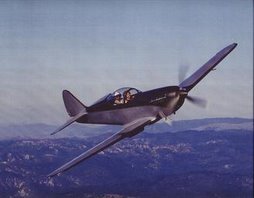
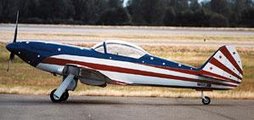
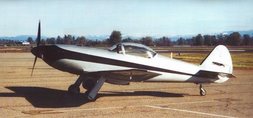
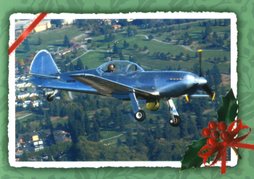
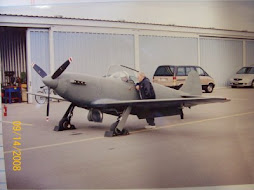
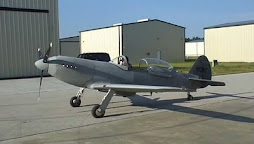

No comments:
Post a Comment